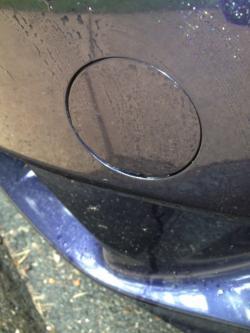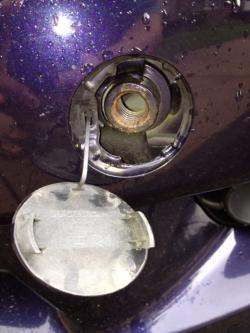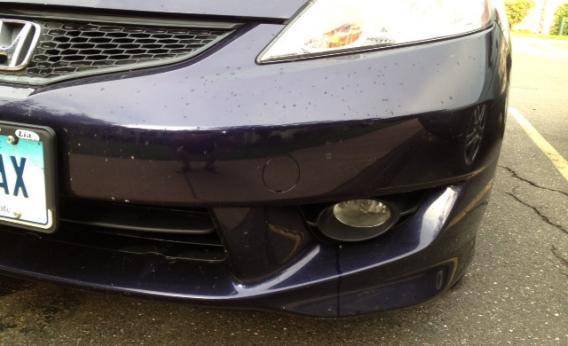In past auto-themed issues we’ve looked at the mysterious panels on the backs of trucks and the hidden pleasures lurking on your gas gauge. Now, with memories of summer and its traffic jams fading into the contemplations of autumn, it’s time again for some automotive navel-gazing. For a bumper crop of previous columns, click here; to submit your own suggestions, e-mail us.
Here’s one for you. Say you’re driving while talking on your cell phone. We all know that whatever the subject, your phone call is a matter of life and death: When you’re maneuvering a ton of steel, flesh and flammable fuel down the highway, talking on a phone basically quadruples the risk of an accident.
And as we all know, that danger doesn’t diminish if you’re using your phone hands-free. It’s the conversation, not the physical device, that distracts and kills.
Still, when you’re on that phone call, it shouldn’t matter—with apologies to Raymond Carver—where the other person is calling from, right?
Wrong. The geographic location of your conversational partner seems to matter a great deal. In perhaps the most fascinating detail ever about cars and phones, drivers were more distracted—and drove much worse—when they thought the person they were speaking to on the phone was geographically farther away.
A recent and terrifying Science News cover story about distracted driving explains this strange phenomenon in terms of something called “cognitive load.” The article quotes sociologist Clifford Nass of Stanford University: “When we communicate with a person we can’t see, we create a mental image of them.” When conversational partners are farther apart—or even were just thought to be farther apart by study participants—the brains of drivers had to do more work.
Many drivers, of course, ignore existing laws on distracted driving. Nass points out in the article that many young people view the windshield as—chillingly—“just another screen.” And it’s easy to criticize states like Montana and South Carolina, which have no statewide restrictions at all on phone calls—even for school bus drivers. (They don’t even ban texting, which may increase the risk of a crash 23-fold.) Careful out there. But not even the nanniest of states have enacted the restrictions that many experts say the evidence demands: a ban for general drivers, not just on texting and handheld phones, but also on hands-free calls.

Jason Vanhoenacker
Still, there are times when you should place a phone call from your car: when you’re not driving. Cell phones make it much easier to call a tow truck when you break down somewhere (or distractedly drive into a telephone pole carrying those old-school land line calls). While you’re waiting for your tow, take a look at your car’s bumper. Odds are there is a little plastic panel on the front bumper, back bumper, or possibly both bumpers. What’s it for?
Take it off, and underneath is an anchor point into which you can screw something called—depending on the home language of your car manufacturer, and how creatively they translate their owner’s manuals—a “loading eye bolt,” a “towing eye hook,” a “towing hook,” or a “screw-in tow fitting.” This thingamajiggy is probably in the tool bag near your spare tire.
What are loading eye bolts for? As a general rule loading eye bolts should not be used for actually towing a car, says Larry Muzamel, the helpful Executive Director of the California Tow Truck Association. Instead, Muzamel explains, the primary purpose of loading eye bolts is to make it easier to load a car onto a roll-back tow truck (the kind of tow truck where the flat bed tilts and car is pulled right onto it).

Jason Vanhoenacker
Nor are the bolts designed to help pull a car out of mud or a ditch, a common misconception. “Loading eye bolts have minimal strength for side force. They’re just designed to pull straight ahead, and only if the vehicle is still in an adequate condition to roll, i.e. still has 4 wheels/tires,” says Muzamel.
A few caveats: Some car manuals—like that of my brother’s 2010 Honda Fit—actually caution against using the hook to “tow the vehicle onto a flat bed.” (Basically, your tow truck operator will know what to do). And on some cars, if a tow truck is not available, the loading eye bolt is reluctantly approved for towing your car with a chain or rope over short distances, at very low speeds, with a driver in the towed vehicle.
Turns out that loading eye bolts are a fairly recent (and controversial, among towing operators) addition to America’s bumperscape. Some exotic cars had them in the 1980s, but they really became widespread only in the 1990s, especially on imports. Why’s that? “Because vehicles became lower, or added lower front body panels (spoilers or air dams).” Why did that happen? Mostly “to improve mileage by making cars more aerodynamic,” Muzamel explains. And “most consumers like the idea of their vehicle being up on a truck,” rather than being towed with two wheels on the ground.
So loading eye bolts are here to stay. But talking on cell phones while driving may not be. That scary Science News article suggests that someday soon the news of science will prevail, and driving while talking on cell phones will become a thing of the past. As Strayer, the Utah neuroscientist put it in the article: “We might actually look back and say, ‘well that was really stupid.’ ”
So there you go—another small, largely unnoticed, but eminently useful addition to our world, and something for motorists to ponder when they’ve ended their illegal phone calls or reached an impasse in their efforts to come up with new slogans for state license plates. (Montanans, given your amazing scenery, and your libertarian outlook on cell phones in cars and many other issues, I’m hoping for “State of Nature.”)
If you’re wondering about something, on a bumper or anywhere else, find a safe place to pull over, park the car, and then take a pic with your cell phone and send it to whatisthat@markvr.com.
